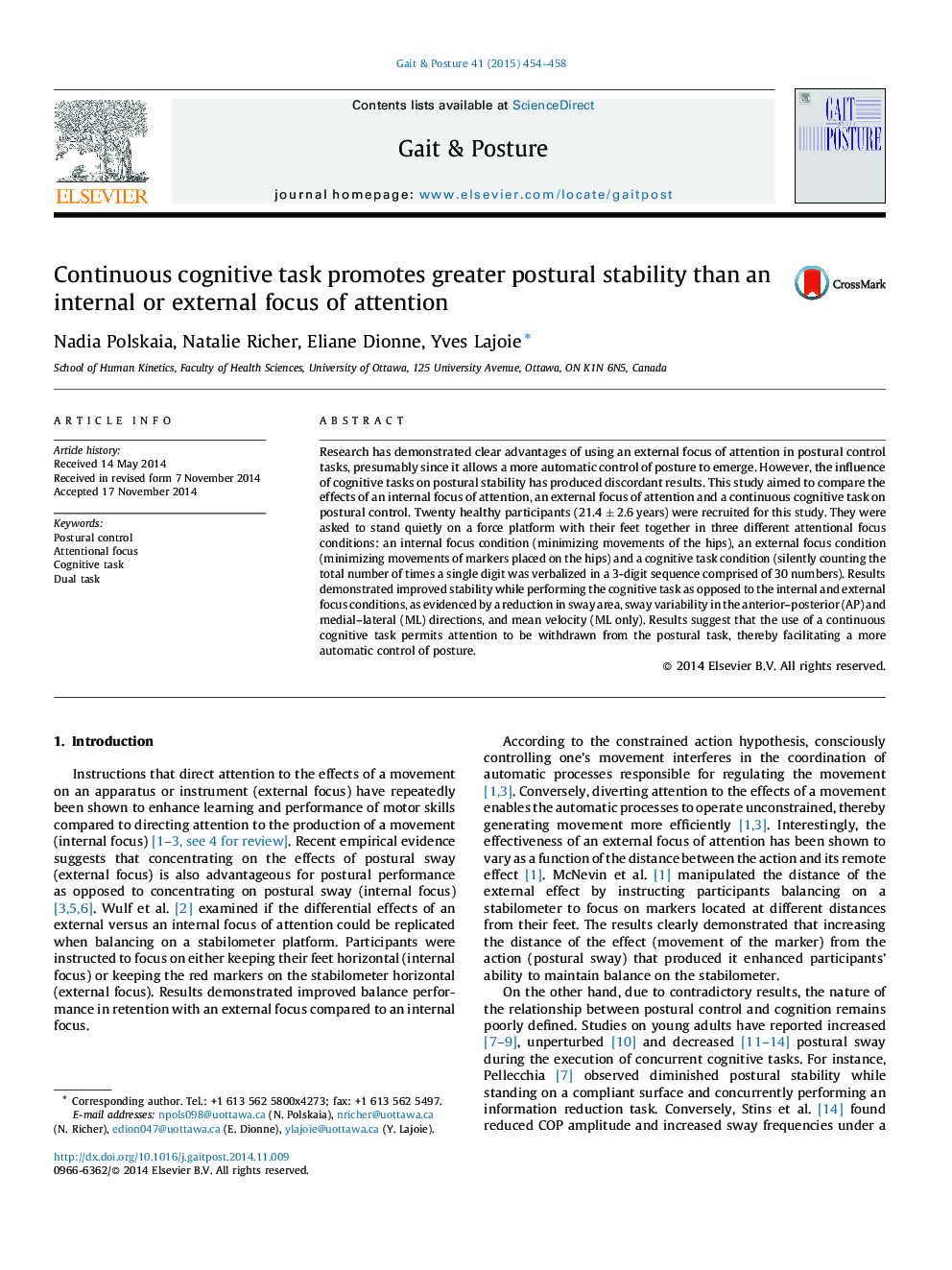| کد مقاله | کد نشریه | سال انتشار | مقاله انگلیسی | نسخه تمام متن |
|---|---|---|---|---|
| 6206101 | 1265640 | 2015 | 5 صفحه PDF | دانلود رایگان |
- Continuous cognitive task performed while standing improved postural stability.
- No difference in postural sway between internal and external focus of attention.
- Shifting attention away from posture facilitates a more automatic postural control.
Research has demonstrated clear advantages of using an external focus of attention in postural control tasks, presumably since it allows a more automatic control of posture to emerge. However, the influence of cognitive tasks on postural stability has produced discordant results. This study aimed to compare the effects of an internal focus of attention, an external focus of attention and a continuous cognitive task on postural control. Twenty healthy participants (21.4 ± 2.6 years) were recruited for this study. They were asked to stand quietly on a force platform with their feet together in three different attentional focus conditions: an internal focus condition (minimizing movements of the hips), an external focus condition (minimizing movements of markers placed on the hips) and a cognitive task condition (silently counting the total number of times a single digit was verbalized in a 3-digit sequence comprised of 30 numbers). Results demonstrated improved stability while performing the cognitive task as opposed to the internal and external focus conditions, as evidenced by a reduction in sway area, sway variability in the anterior-posterior (AP) and medial-lateral (ML) directions, and mean velocity (ML only). Results suggest that the use of a continuous cognitive task permits attention to be withdrawn from the postural task, thereby facilitating a more automatic control of posture.
Journal: Gait & Posture - Volume 41, Issue 2, February 2015, Pages 454-458
